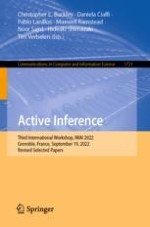2023 | Buch
Active Inference
Third International Workshop, IWAI 2022, Grenoble, France, September 19, 2022, Revised Selected Papers
herausgegeben von: Christopher L. Buckley, Daniela Cialfi, Pablo Lanillos, Maxwell Ramstead, Noor Sajid, Hideaki Shimazaki, Tim Verbelen
Verlag: Springer Nature Switzerland
Buchreihe : Communications in Computer and Information Science
